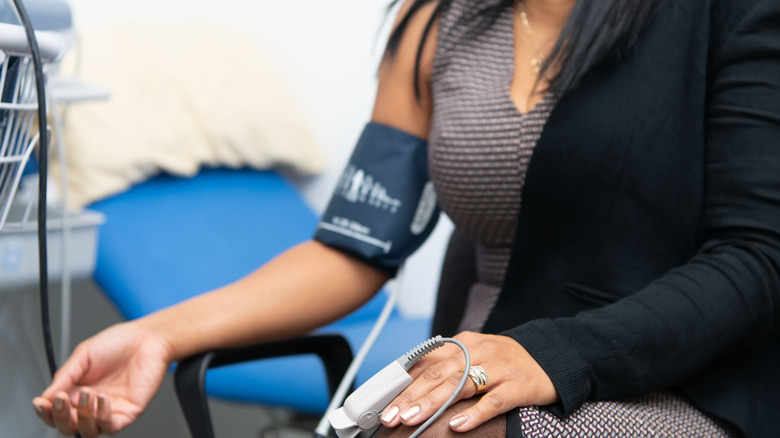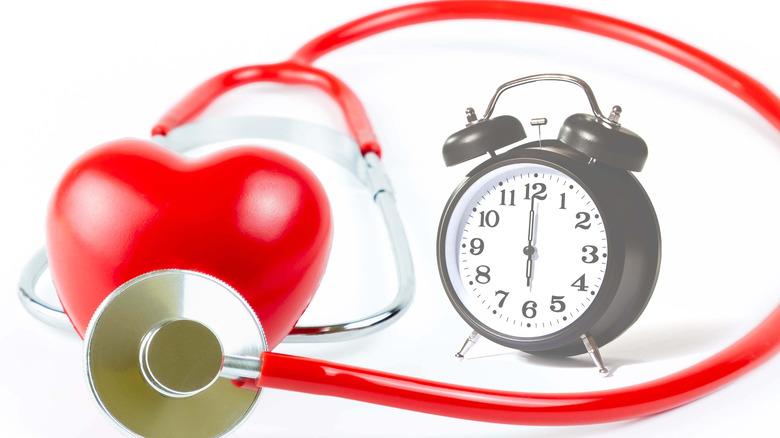What Is A Normal Blood Pressure Level?
A person's blood pressure is considered a key indicator of their health. High blood pressure could be caused by living an unhealthy lifestyle (per Mayo Clinic), or may even signal the presence of a condition like PCOS (via Texas Children's Hospital). With so many possibilities on the table, it's no wonder doctors always start off a visit with a blood pressure check.
Most people are familiar with the format of a blood pressure reading. After the doctor or nurse straps the cuff around your arm, they increase the pressure in the cuff and then give you a number that usually reads something like "124 over 80." These numbers are your systolic and diastolic blood pressures, respectively. They represent slightly different aspects of blood pressure and, when taken together, paint the larger picture of your health that doctors are concerned with.
Unfortunately those numbers don't mean much to most people. Unless they ask or are told what their numbers mean, the nurse's reading doesn't do them much good. This is why it is important for adults to know what the normal blood pressure range is. It gives them more insight into their own health and helps them to take steps to improve their heart health regardless of age, as the CDC recommends.
Below 120 over 80
The American Heart Association (AHA) and the CDC agree that a healthy blood pressure level in adults involves an upper number lower than 120 and a bottom number lower than 80. It is possible to have low blood pressure, but the AHA says there is no specific number that indicates how low is too low. It varies from person to person based on their personal situation, especially during pregnancy.
There are specific numbers that indicate high blood pressure, however. Anyone with a systolic pressure over 120 is considered to have elevated blood pressure, even if their diastolic number is normal. Systolic pressure of 130-139 or diastolic pressure between 80 and 89 is considered the be the first stage of hypertension, generally referred to as high blood pressure. Hypertension stage two is characterized by a systolic pressure 140 or higher or a diastolic pressure of 90 or higher. If a person has a systolic pressure over 180 or a diastolic pressure over 120, it is labeled a hypertensive crisis and they require immediate medical assistance (via the AHA).
These numbers seem high, but as the World Health Organization points out, an estimated 1.28 billion adults have hypertension. It is all too common and greatly increases risk of disease and death as it affects the heart, brain, and kidneys among other bodily systems. It is possible to lower your blood pressure, however, using either medication or lifestyle changes (per AHA).


